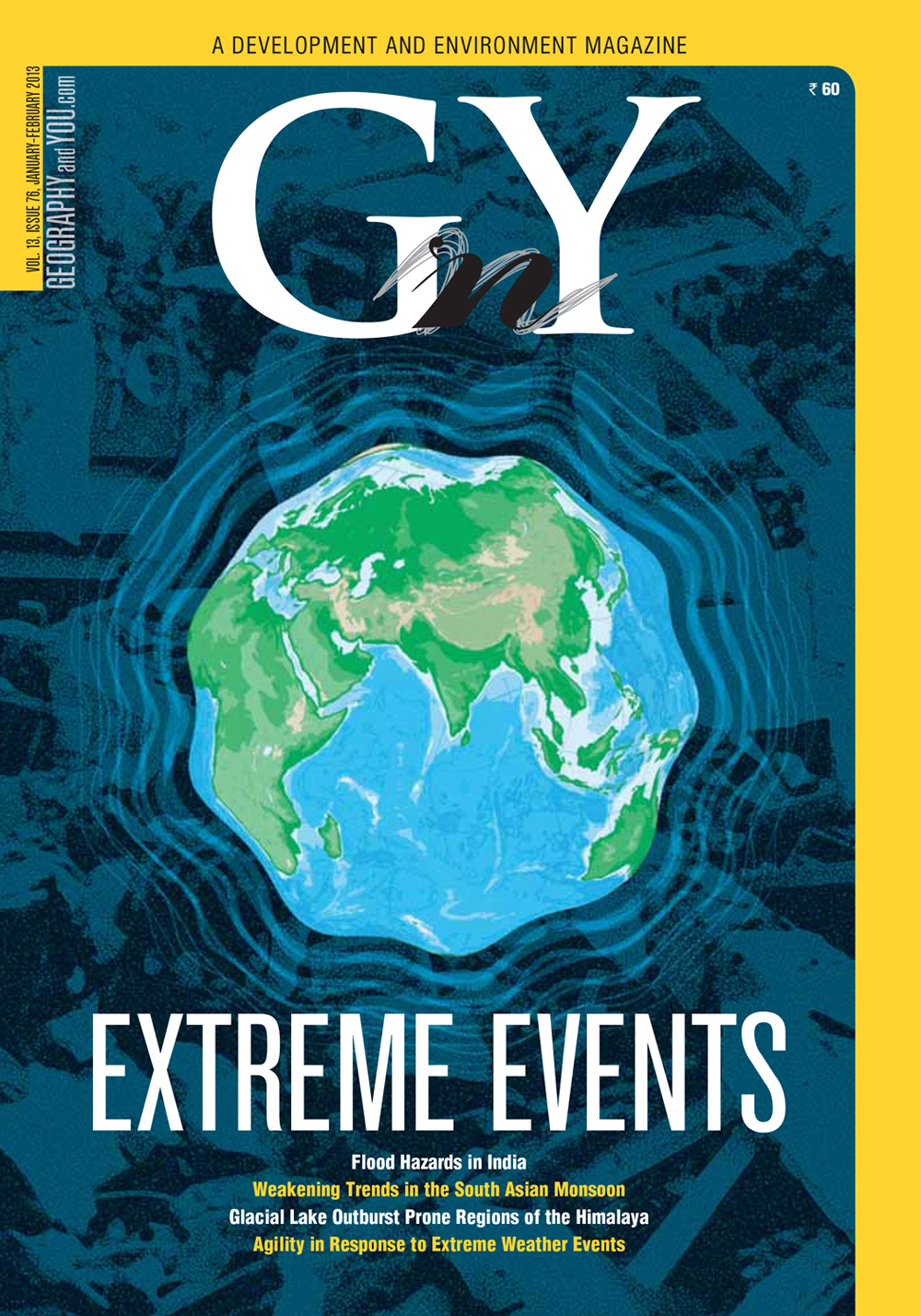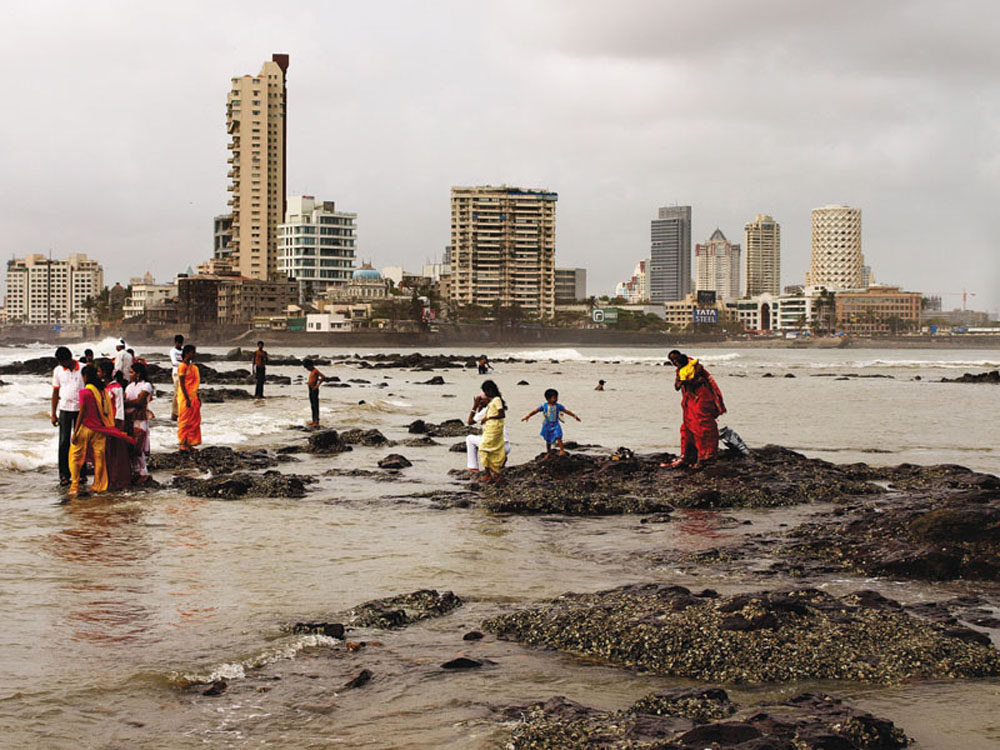
Inside this issue
Extreme Events
Extreme events pose a great threat to the survival of populations across the world. We hear about floods, droughts and heat waves on a regular basis but the connection between weather extremes and climate change is ignored consistently. Today, the weather events are more influenced by climate change as it is constantly altering the natural limits, thus making specific types of extreme events more intense, widespread and frequent.
Extreme events are high magnitude, low frequency events that have the ability to transform a landscape of any region significantly. Earth’s changing climate and projected changes in weather and hydrological parameters suggest that such events have happened in the past and the present. The big question is: what will be their characteristics and frequency in a climate change scenario?
Many people were worried about the possibility of a natural calamity towards the end of 2012 leading the human race to perish. Perhaps the first predictions rose from Mayan astrology – chalked out in a calendar built out of stones indicating an abrupt end of the world on 21 December 2012. But, mass extinction on Earth needs to take clues from a geological perspective to be anywhere near the truth.
Flood hazard studies need process based approaches, as traditional flood control measures have largely failed in India.
The south Asian monsoon rains contribute to 75-80 per cent of the region’s annual precipitation. Thus the response of the monsoon hydrological cycle to global climate change becomes an issue of major concern.
Glaciers work as a water tower, sustaining the lives of millions downstream. The volumes of these glaciers vary - remaining sensitive to global temperature conditions. The glaciers have embedded within it many lakes which follow a seasonal pattern of freeze and thaw. With continuing warming trends, many glaciers are melting rapidly, giving birth to a large number of glacial lakes. These ‘moraine dammed’ lakes are comparatively feeble and its unexpected outburst is a threat to life, asset and infrastructure, downstream.
Andaman and Nicobar Islands are multi hazard prone region. The policy interventions and measures taken in the area should recognise the vulnerable nature of the Islands to ensure a safer life for its people and its bio-diversity.
For certain places extreme weather events no longer seem to be statistically extreme but a norm. The populace of such places is likely to find it increasingly more expensive to be physically secure and lead a life they are used to.
A study on ‘Earthquake Risk Mitigation Strategies in India (2008)’ by C. Ghosh of National Institute of Disaster Management, New Delhi, states that about 59 per cent of India’s land area is under the threat of moderate to severe earthquake shaking intensity 7.0 and higher.
In a changing climate scenario the frequency of severe cyclonic storms is increasing in the Indian sub continent. The sub continent with a long coastline of 8041 km is exposed to nearly 10 per cent of the world’s tropical cyclone.
Report
A historic scientific meet in a hundred years saw the largest congregation of over 15,500 delegates. Amidst the fanfare and excitement what stood out was need to bridge the disconnect between the scientific community and the future scientific need of the country.
In brief
Dear readers It is true that it rains harder today, it is true that days are colder and low temperatures persist for longer periods, and it is true that heat waves are stronger now than ever before… But, we also understand that not every event is linked to climate change. There is this aspect of

